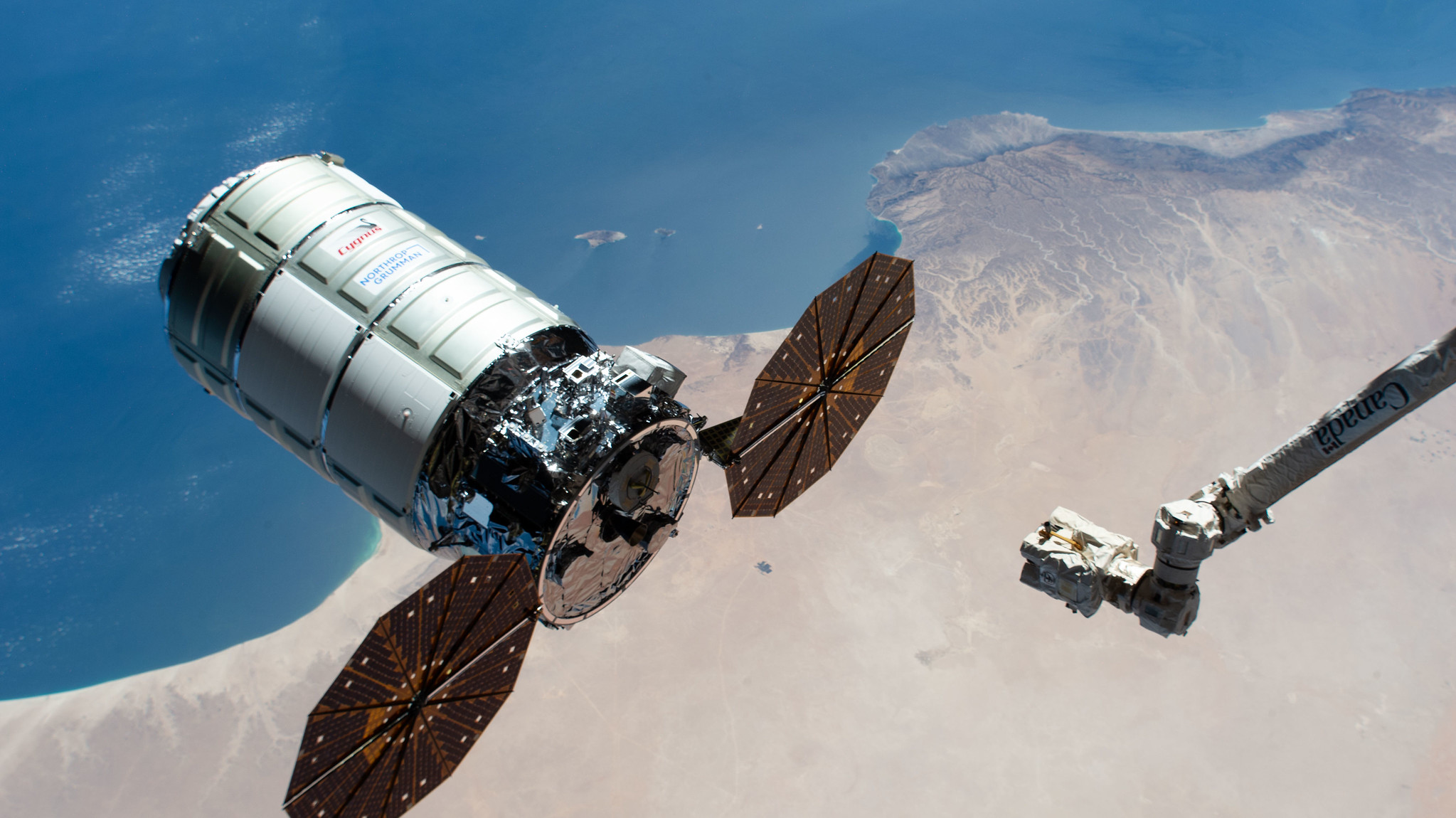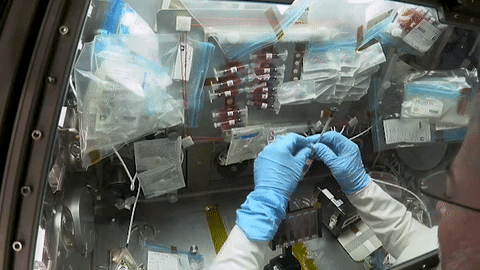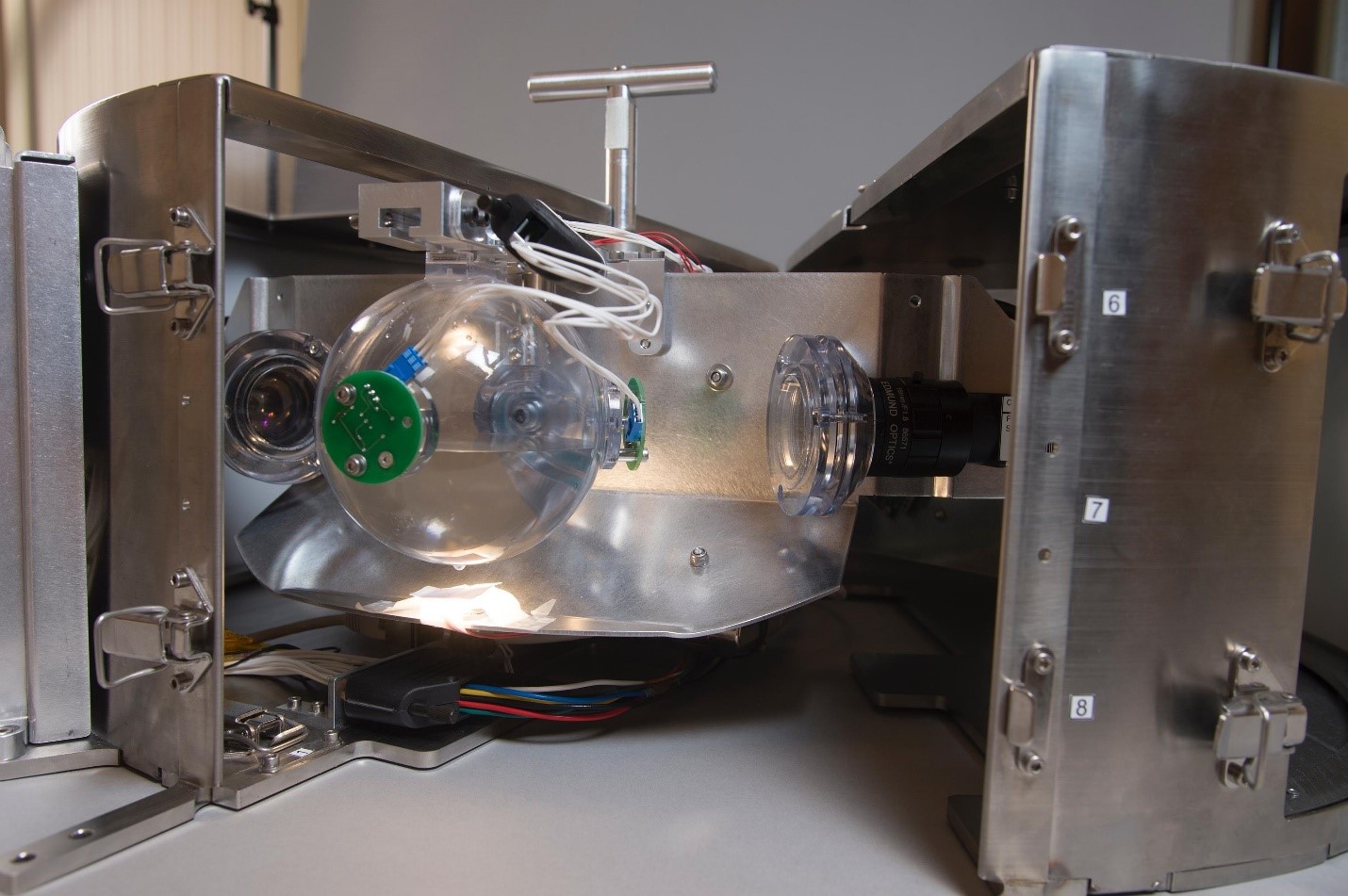Crew members aboard the International Space Station conducted scientific investigations during the week of Feb. 21 that included a study of engineered skin cells, examining cancer cells and their response to a therapeutic drug, and measuring the effects of space travel on human hearing.
The space station, continuously inhabited by humans for 21 years, has supported many scientific breakthroughs. A robust microgravity laboratory with dozens of research facilities and tools, the station supports investigations spanning every major scientific discipline, conveying benefits to future space exploration and advancing basic and applied research on Earth. The orbiting lab also provides a platform for a growing commercial presence in low-Earth orbit that includes research, satellite services, and in-space manufacturing.
Here are details on some of the microgravity investigations currently taking place:
Skin in the game
As people age, their skin tissue deteriorates. Microgravity causes changes in the body similar to aging, but while aging occurs over decades, these changes happen much more quickly in microgravity. The Colgate Skin Aging experiment, sponsored by the ISS U.S. National Lab, takes advantage of this accelerated aging to study cellular and molecular changes in engineered human skin cells in microgravity. Skin performs multiple functions, including protection from infection, regulation of body temperature, and sensory input and its deterioration therefore can be a potential source of other health problems. Results from this experiment could show that these engineered cells may serve as a model to rapidly assess products aimed at protecting skin from the aging process back on Earth. During the week, crew members set up hardware and inserted cell samples and growth media for the investigation.
Decoding cancer cell signals
Cancerous cells ignore signals to stop growing and dividing – or even to die. In microgravity, these signals change considerably, which can either benefit or hinder cancer growth. MicroQuin 3D Tumor, sponsored by the ISS U. S. National Lab, characterizes structure, gene expression, and cell signaling in breast and prostate cancer cells and their response to a drug developed by the company. The drug targets an intracellular protein that helps regulate cellular stress and that research indicates plays an essential role in cancer development. Cells behave differently in microgravity, forming 3D structures that more closely resemble the growth and behavior of cells inside the body. In addition, the stress of microgravity induces changes in cell signaling, which enables study of signaling pathways in ways not possible on Earth. Results could provide new insight into this protein and help advance development of drugs that are more effective, less toxic, and have better patient outcomes. Crew members retrieved media bags from cold stowage, inserted them into the Space Automated Bioproduct Laboratory (SABL), and injected the media into each sample well.
Not-so-silent space
Acoustic Diagnostics, an investigation from ESA (European Space Agency), tests the hearing of crew members before, during, and after flight to assess the possible adverse effects of noise on the space station and the microgravity environment on human hearing. It is important to detect and quantify the symptoms of mild hearing impairment as early as possible. While these effects can be temporary, they also could lead to more significant hearing impairment on future longer space missions. This project developed more advanced technology that can improve the diagnostic power and reduce the duration of tests based on otoacoustic emissions (OAE) or sounds naturally generated from within the inner ear. A portable OAE test device capable of working in noisy environmental conditions has applications in occupational health settings on the ground as well. During the week, crew members took measurements for the investigation.
Other investigations involving the crew:
- SQuARE studies objects and built spaces and how crew members use them over time. Results could contribute to better design for future spacecraft and habitats.
- Veggie PONDS uses a newly developed passive nutrient delivery system and the station’s Veggie plant growth facility to cultivate lettuce and mizuna greens. Results could improve our understanding of how plants respond to microgravity and demonstrate reliable vegetable production on orbit.
- PK-4, a collaboration between ESA and the Russian State Space Agency (Roscosmos), studies complex plasmas, low-temperature gaseous mixtures of ionized gas, neutral gas, and micron-sized particles. Understanding how plasma crystals form in microgravity could shed light on these common phenomena in space and possibly lead to new research methods, better spacecraft designs, and improvements in industries that use plasmas on Earth.
- FLUIDICS, an ESA investigation, measures liquid displacement within small, transparent spheres that serve as stand-ins for spacecraft fuel tanks. Results could provide insights into how to best measure the volume of liquid to manage fuel and improve understanding of sloshing, which could help improve guidance and movement precision of satellites, since fuel sloshing can cause a satellite to wobble.
- EarthKAM allows students to remotely control a digital camera mounted on the space station to take photographs of coastlines, mountain ranges, and other interesting features and phenomena on Earth. The EarthKAM team posts the images online, where they are available to the public and participating classrooms
- EasyMotion from ESA tests a suit worn during pre- and postflight exercise that provides Electro-Myo-Stimulation (EMS). It could save crew time and improve outcomes of inflight exercise on future space missions and in healthy populations on Earth.
- Actiwatch is a wearable monitor that continuously collects data on a crew member’s circadian rhythms, sleep-wake patterns, and activity during flight, beginning as soon as possible after arrival aboard the station.
- ISS Ham Radio provides students, teachers, parents, and others the opportunity to communicate with astronauts using amateur radio units. Before a scheduled call, students learn about the station, radio waves, and other topics, and prepare a list of questions on topics they have researched.
- Food Acceptability looks at how the appeal of food changes during long-duration missions. Whether crew members like and actually eat food has a direct effect on caloric intake and associated nutritional benefits.
For daily updates, follow @ISS_Research, Space Station Research and Technology News, or our Facebook. Follow ISS National Lab for information on its sponsored investigations. For opportunities to see the space station pass over your town, check out Spot the Station.
John Love, ISS Research Planning Integration Scientist
Expedition 66





























